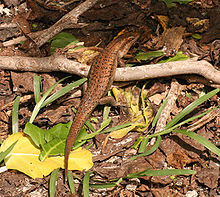 |
| Fregate Beetle |
Growing to around 3cm at the most, compared to other beetles Polposipus herculeanus is not in fact especially large, but still an impressive member of the invertebrate fauna of Fregate island in the Seyechelles. A tenebrionid, it belongs to the same family as the more famous mealworm beetle, but unlike its relative it has a highly restricted range, being known today only from its namesake island.
It is possible though that they may have had a much wider distribution in the past. Certainly other islands in the Seychelles group are likely localities, and there are two specimens known which are labelled as having been collected from Round island near Mauritius. There has not been a lot of work done on the entomological history of Indian ocean islands, but sifting of soil samples might yield remains of these extremely tough insects – they are said to be so solidly built that you can stand on one without crushing it!
 |
| Seychelles Magpie Robin |
The reason for their extinction over most of their natural range is undoubtedly the introduction of rats. They have natural predators in the wild, notably the famous Seychelles Magpie Robin Copsychus seychellarum and Wrights’ Skink Mabuya wrightii, but rats are far more voracious and can easily cope even with their tough defenses. Unfortunately, in 1995 brown rats colonised the island, and the population was badly hit before the rats were finally eradicated a few years later. Then in 2004 wilt disease killed off most of the islands sandragon trees, formerly a favoured habitat. The current status on the IUCN Red List is Critically Endangered.
 |
| Wright's Skink |
In the wild the beetles are nocturnal. They rest up during the day under loose bark, crevices in tree trunks, or on the underside of branches, where they are often found in groups. Usually they stay within 2m of the ground, though they have been found as high as 15m up in the trees. After dark they descend to the ground to forage in the leaf litter, feeding on dead leaves, rotten wood, fungi and possibly scavenging dead animals when they get the chance. The eggs are laid in the leaf litter, and the larvae feed on decaying wood and other plant material. The total generation time is around 8 or 9 months on average. The adult beetles are quite long lived – the record is of two wild collected adults which lived more than seven years in captivity.
Fortunately, the beetles have proved to be adaptable to a captive breeding programme, which is currently managed by The Zoological Society of London as a safety precaution. The beetles are bred in large tubs with a deep substrate (at least 30cm minimum) composed of leaf litter, decaying wood and coconut coir compost. The only furniture required is a climbing branch for the beetles to get above the substrate as they would in the wild during the day. A temperature range of around 24
0C is sufficient to maintain them. As the beetles cannot fly, as long as a smooth unclimbable edge to the container is provided the beetles will remain in place. The beetles are fed fruit, mushrooms, and potatoes, with the types changed daily. It is important that there are enough pieces dispersed around the container to enable the beetles to feed easily without competing, although they show little aggression to each other.
For more information on the husbandry of these beetles, see here:
http://www.islandbiodiversity.com/Phelsuma%2013-2.pdf
Here at Bristol, a few have just gone on show at the revamped Bug World - visitors please note
(Images from wikipedia, zsl website)



No comments:
Post a Comment